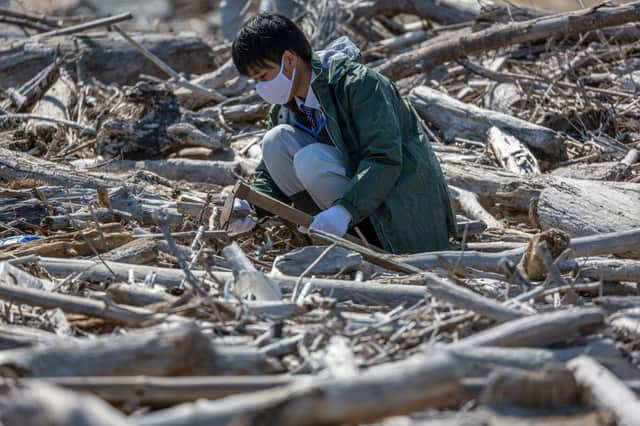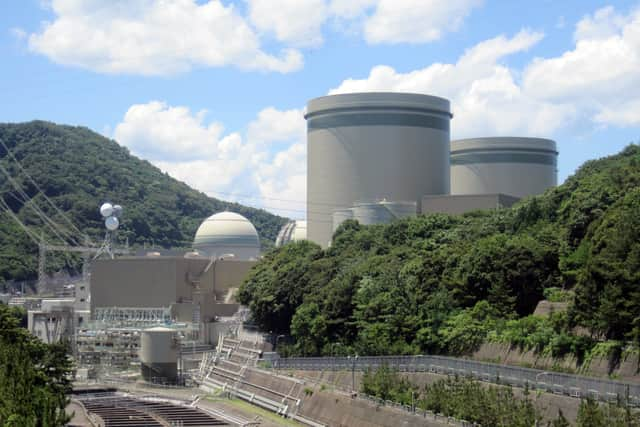Japan Tsunami 2024: how does the latest tsunami warning issued compare to the 2011 Tohoku tsunami?


A tsunami advisory warning has been issued to prefectures along the West coast of Japan after a 7.6 magnitude earthquake struck of the western part of Japan this morning. The prefecture of Ishikawa is said to be the most at risk, with a warning issue for those residents around the area to evacuate and head to higher ground after waves are estimated to reach 5ft in height.
According to NHK, the tsunami waves may continue to return, and warnings are still being broadcast more than an hour after the initial alert. Furthermore, several aftershocks have occurred in the region.
Advertisement
Hide AdAdvertisement
Hide AdThe government spokesman, Yoshimasa Hayashi, stated in a press conference that nuclear plants in the area have not reported any irregularities. However, he urged people in coastal areas to evacuate to a safe area immediately, as the oncoming tsunami could be dangerous. He emphasized the importance of time, stating that every minute counts.
The warnings come 13 years after one of Japan’s deadliest tsunamis hit the east coast of the country, the 2011 Tohoku earthquake which became the strongest earthquake on record to hit Japan and its surge waves destroying villages as the waves made their way inland. Around 18,000 died after “The Great East Japan Earthquake,” with concerns also about the functionality of the Fukushima Nuclear Power Plant, which was also affected by the tsunami itself.
But while it is still very early to compare both this earthquake and the 2011 Great East Japan Earthquake, should there be as much concern regarding this new tsunami incoming, which is now affecting both parts of Russia and South Korea, compared to 2011 - which was recorded as the largest magnitude ever recorded in Japan and the third-largest in the world since 1900.
What was the magnitude of the 2011 Tohoku earthquake compared to the NYD 2024 earthquake?
The 2011 Tohoku earthquake, which struck the East coast of Japan in March 2011, was confirmed to be between 9.0 and 9.1 in magnitude, while the earthquake that recently struck off the coast of West Japan on New Year’s Day is currently being confirmed as a 7.5 in magnitude.
How big were the waves of the 2011 Tohoku earthquake compared to the current NYD 2024 tsunami warnings?
Advertisement
Hide AdAdvertisement
Hide AdThe height of the wave is currently being estimated at 5 metres, meaning that the Japanese advisory board have recommended that citizens in the areas affected by the tsunami warning should evacuate and seek higher ground.
However, that pales compared to the size of the waves during the 2011 Tohoku earthquake, with tsunami waves reaching 40.5 meters at its highest, and a surge strength of 2.99 g.
Are there any nuclear power plants in West Japan that might be affected like the Fukushima Nuclear Power Plant in 2011?


Two nuclear power plants on Japan's West coast have fallen under the range of the tsunami warning issued to the prefectures on the West coast of Japan. Takahama Nuclear Power Plant is based in the Oi Prefecture, while Shika Nuclear Power Station is based in the Ishikawa Prefecture, where the most serious of evacuation warnings are currently advised.
As of writing, however, there have been no signs of irregularities at any power plant in the area, according to NHK News.
Why is Japan more susceptible to tsunamis compared to other countries?
Advertisement
Hide AdAdvertisement
Hide AdJapan is particularly susceptible to tsunamis due to its location along the Pacific Ring of Fire, which is an area characterized by high seismic and volcanic activity. The Pacific Ring of Fire is a horseshoe-shaped zone that encircles the Pacific Ocean, and it is known for its frequent earthquakes and numerous active volcanoes. Several tectonic plates, including the Pacific Plate, Philippine Sea Plate, and Eurasian Plate, converge around Japan, leading to intense geological activity.
In Japan's case, the subduction of the Pacific Plate beneath the Eurasian Plate is a major factor. When these tectonic plates grind against each other, it can result in powerful undersea earthquakes. If the earthquake occurs beneath the ocean floor, it may displace large volumes of water, triggering a tsunami.
Comment Guidelines
National World encourages reader discussion on our stories. User feedback, insights and back-and-forth exchanges add a rich layer of context to reporting. Please review our Community Guidelines before commenting.
